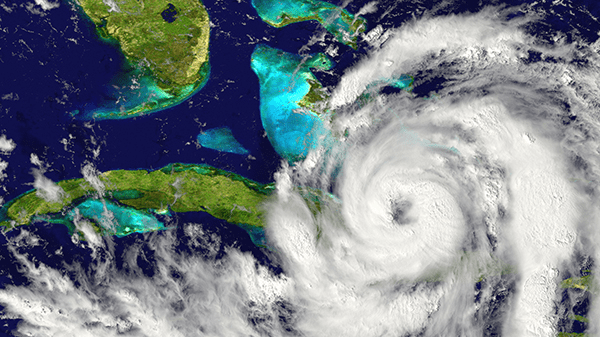Get ‘hurricane ready’ before storms threaten home or business

Hurricanes can be among nature’s most destructive events.
Weather forecasters predict above-average activity this Atlantic hurricane season, which runs from June 1 to November 30. Take steps to minimize damage and speed recovery.
First and foremost, take whatever precautions are necessary to protect yourself and the people around you. While property preparations are important, they’re not worth risking life or health. If you need to evacuate, do so, as long as you have time to reach a place of safety. Don’t be caught on the roads in your car or attempt to drive through water-covered streets. You can track storms through the National Hurricane Center. Once the storm reaches your area, stay inside, away from windows and possible flying debris.
If you have sufficient time, here are some simple things you can do to prepare your home or business:
PROPERTY
Clean out your gutters. Remove leaves and other debris, first by hand to get rid of the large particles and then with a scraping tool and water hose. This helps to prevent overflows that could cause interior damage.
Make sure downspouts and window drains properly guide the water away from the structure. Direct downspouts at least 6 feet from the foundation. Clear any obstructions.
Clear your yard and outdoor spaces of potential flying debris. Store lawn furniture, potted plants, bicycles, trash cans or other loose items.
Protect your windows and glass doors. If you have functional shutters, secure them.
Move business and construction vehicles to higher ground. Keeping vehicles and other movable property out of harm’s way can shorten the downtime faced by your organization and get you back in business sooner after the storm has passed. Building contractors and safety managers can find additional details for securing your construction site in the Loss Control Services section of our website.
EQUIPMENT AND SUPPLIES
Test your generator or battery backup. Be prepared for an extended power outage, especially if you have electrically powered medical equipment. Store extra fuel safely and only in approved containers. Don’t operate portable gas generators indoors or in enclosed spaces where it could lead to carbon monoxide poisoning.
Charge your cell phone and any extra batteries. Adjust settings to eliminate non-essential apps and preserve battery life. Store emergency phone numbers in your contacts, including family members, your doctor, your insurance agent and your insurance company’s claims phone number. Keep a paper copy in case you lose power.
Stock up on flashlights, spare batteries, food and water. Keep your emergency kit supplied with provisions for each family member. Don’t forget your pets. Keep extra diapers on hand for little ones.
Check your first aid kit. Keep it stocked with the basics to treat minor scrapes or injuries; in the case of a disaster, emergency medical services may be limited to life-threatening cases. Keep several days’ supply of prescription medications on hand.
Know where your emergency shutoff valves are located. In the event of damage, you may need to cut off electricity, water or gas.
GENERAL PREPARATIONS
Understand the coverage provided in your insurance policy. No one should be surprised that things like “flood” and “earth movement” may be limited or excluded under some insurance policies. If something isn’t clear to you, contact your agent and get an explanation of exactly what your policy will provide for you.
Store a copy of your insurance policy. It’s best to keep a copy offsite, in a safe deposit box or digitally in a location you can access from anywhere. If you must evacuate, take copies of key papers with you, including birth certificates, marriage records, property deeds, bank accounts, etc.
Identify the safe places in your home or workplace. Know where to go away from windows, skylights and glass doors in case the storm spawns a tornado.
Keep a property inventory. If a storm is imminent, it may be too late to thoroughly document your belongings, but even taking cellphone photos of each room can help if you need to file an insurance claim later.
RELATED INFORMATION
More information is available in several of our blog posts; a selection of our information is available on our Prepare page for Hurricanes.
These websites contain additional preparation tips and advice:
Department of Homeland Security’s Ready.gov site
National Weather Service Hurricane Preparation Page
This loss control information is advisory only. The author assumes no responsibility for management or control of loss control activities. Not all exposures are identified in this article. For policy and coverage questions, contact your local, independent insurance agent.







